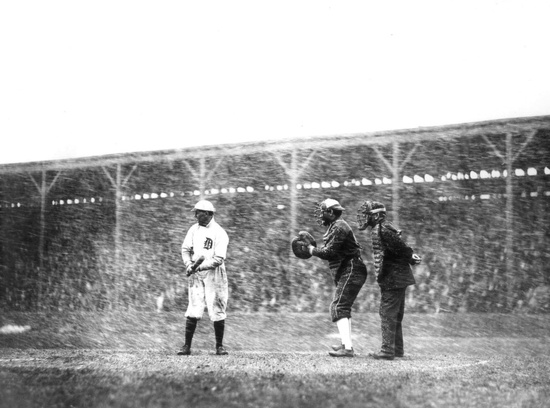An ongoing dialogue on HIV/AIDS, infectious diseases,
March 30th, 2011
Journal Club: Even When You Think You Should Wait, It’s Probably Time to Start
 Two papers just published in AIDS with relevance to the “when to start” antiretroviral therapy question.
Two papers just published in AIDS with relevance to the “when to start” antiretroviral therapy question.
Both apply to certain patients in whom we might consider waiting to start treatment– but both these studies suggest we do otherwise.
The first applies to the patients with slooooow CD4 decline. Perhaps so slow that both you and your patient are very comfortable watching it drift down over the years, from initially normal — let’s say 900 — to 700, then 500 over a 10-year period. After all, with such a slow decline, what could the harm be in waiting?
Certainly I’ve shared this kind of mutual denial with patients of mine, most of whom also have very low HIV RNA levels.
But according to this paper, it’s just this sort of patient who has the worst immunologic response to ART. In reviewing 2,038 patients with pre- and post-ART CD4 trajectories, the study finds that the patients with the slowest CD4 decline have the worst immunologic response to ART. In other words, slope going down predicts slope going up.
As the authors note in their discussion, it’s ironically the other group — those with fast CD4 decline — who have been targeted in HIV treatment guidelines for early ART regardless of CD4 cell counts. But perhaps these data (which are displayed in some very cool figures, by the way) tell us that if one important goal of treatment is maintaining a normal or near normal CD4, then the rate of decline is immaterial — just be sure to start ART before the CD4 count becomes abnormal.
A second paper, from Cote d’Ivoire, looks at patients who recently acquired HIV, another group we might traditionally hold off on treating. Looking at 304 patients with recent seroconversion, the investigators track the time to relevant CD4 thresholds for starting treatment. The results: more than half (57%) have a CD4 cell count < 500 at diagnosis, and 72% are at this level just two years later.
In short, the great majority of patients with recently-acquired HIV meet CD4 criteria for starting treatment sooner rather than later. So while the “time to AIDS” in untreated HIV might average 10 years, in no way should we count this as “time to starting HIV therapy”, which will come much sooner.
Categories: Health Care, HIV, Patient Care, Research
Tags: antiretroviral therapy, ART, HIV, when to start
You can follow any responses to this entry through the RSS 2.0 feed. Both comments and pings are currently closed.
Comments are closed.

Paul E. Sax, MD
Contributing Editor
NEJM Journal Watch
Infectious Diseases
Biography | Disclosures | Summaries
Learn more about HIV and ID Observations.
Follow HIV and ID Observations Posts via Email
- Federal HIV Guidelines Face a Shutdown — A Critical Loss for Clinicians and Patients
- Why the Sudden Firing of ACIP Members Should Put Every Clinician on High Alert
- How ID Doctors Get Paid, Part 2: Infection Control and Other Invaluable (but Often Invisible) Work
- The Mystery of the Isolated Hepatitis B Core Antibody, Solved
- How ID Doctors Get Paid, Part 3: The Grab Bag Edition
- ID Cartoon Caption Contest (125)
- ID Cartoon Caption Contest #2 Winner — and a New Contest for the Holidays (92)
- Dear Nation — A Series of Apologies on COVID-19 (80)
- How to Induce Rage in a Doctor (77)
- IDSA’s COVID-19 Treatment Guidelines Highlight Difficulty of “Don’t Just Do Something, Stand There” (74)
-
 NEJM Journal Watch — Recent Infectious Disease Articles
NEJM Journal Watch — Recent Infectious Disease Articles- Observations from ID and Beyond: Federal HIV Guidelines Face a Shutdown — A Critical Loss for Clinicians and Patients
- Ceftriaxone for Patients Hospitalized with Pneumonia: One Gram or Two?
- More PrEP, Less HIV: U.S. State Data
- Observations from ID and Beyond: Why the Sudden Firing of ACIP Members Should Put Every Clinician on High Alert
- Does HIV RNA Testing to Monitor PrEP Add Value?
-
Tag Cloud
- Abacavir AIDS antibiotics antiretroviral therapy ART atazanavir baseball Brush with Greatness CDC C diff COVID-19 CROI darunavir dolutegravir elvitegravir etravirine FDA HCV hepatitis C HIV HIV cure HIV testing ID fellowship ID Learning Unit Infectious Diseases influenza Link-o-Rama lyme disease MRSA PEP Policy PrEP prevention primary care raltegravir Really Rapid Review resistance Retrovirus Conference rilpivirine sofosbuvir TDF/FTC tenofovir Thanksgiving vaccines zoster
